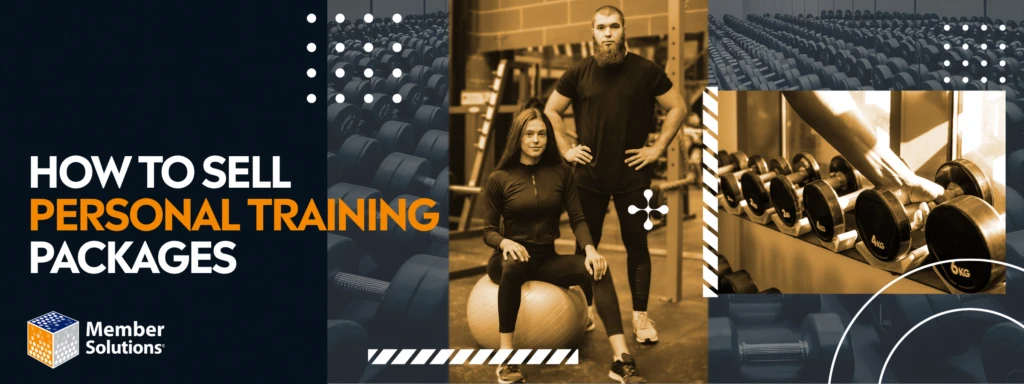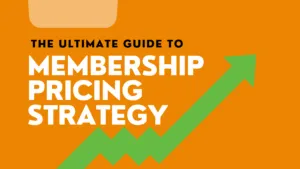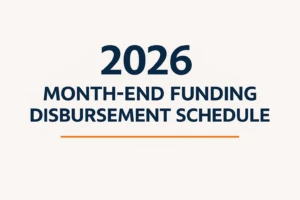How to Sell Personal Training Packages: Strategies That Actually Convert Clients
You know your training programs can change lives—but let’s be honest, that’s only half the battle.
If you’re not selling your personal training packages effectively, you’re leaving both impact and income on the table. And it’s not about using high-pressure tactics or becoming someone you’re not. It’s about knowing how to present your services in a way that feels natural, confident, and genuinely helpful.
This guide is for you if:
- You’re tired of hearing “I’ll think about it” after a free session
- You’re unsure how to price or position your offers
- Or you simply want to get better at turning interested leads into loyal clients
We’ll break down what works—from understanding buyer psychology to crafting irresistible packages—and how to implement it without sounding pushy or salesy.
Ready to sell with confidence and finally fill your calendar with committed clients? Let’s get into it.
Understanding Client Needs Before Creating Packages
The best personal trainers don’t just sell sessions—they offer solutions. And you can’t sell a solution until you fully understand the problem.
Before you build your training packages, take a step back and ask: who am I really trying to help?
Identify Your Ideal Client Profile
Not every client wants the same thing—and that’s a good thing. The more specific you get about who you’re serving, the easier it is to design packages that speak directly to them.
Are you working with:
- Busy professionals who want efficient, no-fluff workouts?
- Weight loss clients looking for long-term transformation?
- Athletes chasing peak performance?
- Seniors focused on strength and mobility?
Once you know who you’re targeting, you can design offers that hit the mark—and skip the generic stuff that gets ignored.
Ask the Right Questions
Sales shouldn’t feel like convincing. It should feel like understanding. The best way to get there? Ask discovery questions that get people talking about what they really want and what’s held them back.
Try these:
- “What have you tried before—and what didn’t work?”
- “Why is hitting this goal important to you right now?”
- “What’s been your biggest obstacle up until now?”
- “On a scale of 1–10, how serious are you about reaching this goal?”
The answers to these questions aren’t just helpful—they’re gold. They give you the emotional drivers behind someone’s goals, which is exactly what you need to position your training as the right solution.
Creating Personal Training Packages That Sell
Now that you know exactly who you’re speaking to, it’s time to build packages they’ll actually want to buy.
The key? Don’t just sell sessions—sell outcomes. Your offers should feel like a clear path from where your client is now to where they want to be.
Package Structure Options
The structure of your offer matters just as much as what’s inside it. Here are a few proven ways to package your personal training services:
- Session-Based Packages: These are straightforward and great for clients who want flexibility. You offer a bundle—like 5, 10, or 20 sessions—and usually provide a small discount for buying in bulk. This works well for people who prefer short-term commitments or are just getting started.
- Time-Based Packages: These involve a commitment over a set period—monthly or quarterly, for example—with a fixed number of sessions per week. It’s perfect for clients who thrive on routine and want accountability built into their schedule.
- Goal-Based Packages: These focus on a specific outcome, like “12-Week Body Reboot” or “8-Week Strength & Performance Plan.” They attract results-oriented clients who are motivated by a finish line and want to see measurable progress.
- Hybrid Packages: This is where you can get creative. Combine personal training with other services like nutrition coaching, fitness assessments, or even group classes. These feel more complete—and justify a higher price point.
Value-Adding Elements
You don’t need to offer more hours to make your packages more valuable. In fact, clients often appreciate support that extends beyond just the sessions themselves.
Here are some easy ways to add value:
- Include an initial fitness assessment to benchmark progress
- Offer regular check-ins or progress tracking reports
- Provide take-home workouts for off days
- Add basic nutrition guidance or templates
- Give access to a client app or tracking tool
- Allow email or message support between sessions
These extras help your offer stand out and show that you care about your client’s overall journey—not just their time in the gym.
Pricing Strategy
A common mistake? Pricing based purely on how many sessions you’re offering. Instead, price based on the outcome and experience you’re delivering.
Here’s how to approach it:
- Research Your Market. Know what other trainers in your area charge, but don’t get stuck in a race to the bottom.
- Highlight Your Strengths. If you’ve got specialized experience or certifications, build your pricing around that expertise.
- Use Clear Tiers. Create multiple package levels so clients can choose based on their needs and budget.
- Offer Payment Plans. This helps clients afford higher-ticket packages while giving you more consistent income.
And don’t be afraid to charge what you’re worth. Many clients equate higher prices with better results. As long as you deliver a great experience, your pricing should reflect the value you’re bringing to their life.
Sales Techniques That Convert Prospects to Clients
Having great personal training packages is important—but how you present them is what actually closes the deal.
Sales in the fitness space isn’t about pressure or fancy talk. It’s about trust, clarity, and making clients feel confident that they’re finally in the right hands. Let’s walk through how to do that.
The Consultation Process
The initial consultation is where most sales are won (or lost). So don’t wing it—structure it like a pro.
Here’s a simple framework that works:
- Build Rapport First: Don’t jump straight into business. Take a few minutes to connect—ask about their day, talk casually. People buy from trainers they like and trust.
- Ask Discovery Questions: Dig into their goals, past frustrations, and what’s really motivating them. This is where you uncover what matters most to them—and what will help you frame your solution.
- Demonstrate Expertise: As they talk, reflect back your understanding. Show that you’ve helped people with similar challenges before and you know exactly what to do next.
- Present 2–3 Tailored Options: Don’t overwhelm them with choices. Instead, offer two or three package options that directly align with what they told you.
- Handle Objections Calmly: You’ll get questions or pushback. That’s normal. The goal isn’t to “win” the conversation—it’s to solve the problem together.
- Guide Them to a Decision: Most people won’t make a decision unless you help them. If they’re unsure, walk them through the pros and cons, and help them feel confident taking the next step.
Overcoming Common Objections
Objections don’t mean “no.” They usually mean “I’m not sure yet.” Here’s how to respond with empathy while still moving the conversation forward:
- Price: “I get it—the investment can feel like a lot. A lot of my clients felt the same at first, but they found the results and accountability made it more than worth it. Would a payment plan help make it easier for you?”
- Time: “Totally understand. That’s exactly why I offer focused, efficient sessions that work around your schedule. Most of my busiest clients say having these sessions actually gives them back more structure in their week.”
- Fear of Commitment: “I hear you. That’s why we start with a full assessment and personalize everything. Most clients start seeing results by week three—and once you feel that momentum, the rest comes naturally.”
- Need to Think About It: “Makes sense. Can I ask—what are you thinking about specifically? In my experience, when someone says they want to think about it, it usually means there’s a concern they haven’t voiced yet. Let’s talk it through.”
Use Social Proof
People want to know: “Has this worked for someone like me?” This is where testimonials and success stories come in.
Make sure to:
- Share before-and-after photos (with permission, of course)
- Use testimonials from clients who had similar goals or concerns
- Highlight specific wins—like pounds lost, strength gained, or energy levels improved
- Tell short stories about clients who overcame the same obstacles your prospect is facing
When someone hears about real people getting real results, they start to picture themselves doing the same—and that’s what drives action.
Digital Tools for Selling Personal Training Packages
If you want to sell more training packages without adding to your workload, the right tech can make all the difference. Digital tools help you streamline your process, provide a better client experience, and close more deals—faster.
Let’s break down the two main categories you should focus on:
Membership Management Software
A solid membership platform—like Member Solutions—can take a huge load off your plate. Here’s what the right software can handle for you:
- Package Creation and Customization: Easily build and tweak offers to match different client goals or tiers.
- Automated Billing and Payment Processing: No more chasing payments or managing spreadsheets—let the system handle it.
- Client Progress Tracking: Keep tabs on workouts, goals, and milestones—all in one place.
- Scheduling and Appointment Reminders: Allow clients to book sessions and receive automatic reminders so no one misses a workout.
- Marketing Automation for Follow-Ups: Re-engage past leads or upsell current clients with automated email flows.
A system like this isn’t just for convenience—it creates a smooth, professional experience that builds trust and helps you scale.
You can also explore tools built specifically to improve member engagement and run your training business more efficiently—especially if you’re managing multiple clients or programs.
Online Booking and Payment Systems
When someone’s ready to sign up, don’t slow them down. A good system should let them:
- View Available Package Options: So they can easily compare and choose what’s right for them.
- Schedule Consultations: Let interested prospects pick a time that works—no back and forth.
- Make Payments Securely: Provide peace of mind with professional, secure checkout options.
- Sign Agreements and Waivers Digitally: Cut the paperwork and handle everything upfront with digital forms.
Removing friction in the buying process makes a huge difference. The easier you make it for someone to say “yes,” the more often they will.
Marketing Your Personal Training Packages
Even the best-designed packages won’t sell themselves. To grow your client base, you need consistent visibility and smart marketing. These proven strategies help personal trainers attract new leads and stay top of mind with potential clients.
And if you’re also looking to increase your revenue beyond training sessions, you can explore other income streams like digital programs, merch, or online coaching—but let’s focus on marketing your current offers first.
Social Media Strategy
Your social media presence isn’t just for likes—it’s a sales tool. Use it to build trust, show proof of your results, and connect with potential clients where they already spend their time.
- Share Transformation Stories and Testimonials: Let your followers see real results from real clients.
- Post Workout Videos Showing Your Teaching Style: Give a glimpse of what training with you feels like—people want to know what to expect.
- Create Educational Content That Answers Common Questions:
Position yourself as the go-to expert by addressing common concerns like “how to break a plateau” or “best post-workout meals.” - Use Before/After Content (With Permission): Visual proof is powerful—when done ethically and respectfully.
- Run Targeted Ads to Reach New Leads: Promote free consultations or transformation programs to people in your area.
Email Marketing
If you’re not building an email list, you’re missing out on one of the highest-ROI marketing tools available. Email lets you stay in touch with warm leads and turn interest into action over time.
- Build a List of Interested Prospects: Collect emails through your website, social media, or lead magnets like a free guide.
- Send Fitness and Nutrition Tips Regularly: Stay top of mind while offering value that keeps people engaged.
- Promote Limited-Time Package Offers: Give your list early access or exclusive discounts to create urgency.
- Share Client Wins and Stories: Use client success stories to inspire action.
- Follow Up With Consultation No-Shows or Uncommitted Leads: A simple “Still thinking about your fitness goals?” email can go a long way.
Referral Programs
One of the easiest ways to grow your client base is to let your happy clients do the talking. A well-run referral program can keep leads coming in with little effort on your part.
- Offer Free Sessions for Referrals: A free session is a strong motivator—especially for clients who are already loving their results.
- Create Tiered Rewards for Multiple Referrals: For example: 1 referral = free session, 3 = free month, 5 = bonus package.
- Partner With Complementary Businesses: Think local massage therapists, chiropractors, or wellness shops—offer to send clients their way in exchange for referrals.
- Make the Process Simple and Clear: Have a referral card or link ready. The easier it is to refer, the more likely it is to happen.
Retaining Clients Through Exceptional Service

Selling a training package is important—but retaining clients is where your business becomes sustainable and truly profitable.
When clients feel supported, valued, and consistently challenged, they’re far more likely to stick around—and refer others. Here’s how to make that happen.
Delivering More Than Expected
The small things you do outside of scheduled sessions can make a big impression. By going above and beyond, you turn a one-time client into a long-term champion of your brand.
- Surprise Clients With Bonus Content or Resources: Send an extra mobility routine, a quick nutrition checklist, or a motivational voice note—just because.
- Celebrate Their Milestones and Achievements: Whether it’s their first push-up or a 10-lb loss, recognize it. Share their wins (with permission) and make them feel seen.
- Remember Personal Details and Preferences: From preferred music during sessions to remembering a birthday—these little touches matter.
- Check In Between Sessions When Appropriate: A quick message asking how they’re doing shows genuine care and builds trust.
- Continuously Educate Yourself to Bring New Value: When you learn new techniques or strategies, pass that knowledge along—it keeps your training fresh and relevant.
Creating a Clear Renewal Process
One of the biggest mistakes trainers make? Waiting until the final session to talk about what’s next. Renewals should feel natural and expected—not like a surprise sales pitch.
- Start the Conversation Before the Package Ends: Give clients time to consider their options instead of putting them on the spot at the last minute.
- Review Their Progress and Set New Goals: Show them how far they’ve come—and what’s still ahead. Progress plus purpose equals motivation to continue.
- Offer Incentives for Early Renewals: A small discount, bonus session, or exclusive access can encourage clients to commit early.
- Create “Graduate” Packages for Long-Term Clients: These are higher-level programs with added perks, built specifically for clients who’ve already gone through your core training.
Retention is all about relationships. When you provide a great experience and show that you’re invested in their success, clients don’t just stick around—they become your biggest fans.
Measuring and Improving Your Sales Process
If you want to sell more—and retain more—you need to know what’s working and what’s not. Tracking key metrics gives you the insight to improve your offers, tighten your pitch, and grow with intention.
Start by monitoring these core numbers:
- Consultation-to-Client Conversion Rate: How many consultations actually turn into paying clients? This tells you how effective your sales conversations are.
- Average Package Value: Are clients consistently choosing high-value packages or sticking with the lowest tier? This helps you adjust your pricing and positioning.
- Client Retention and Renewal Rates: Are people coming back after their first package ends? If not, look into your follow-up process and long-term engagement strategy.
- Most Popular Package Types: Which packages are selling best—and which are underperforming? This can guide your offer lineup and marketing focus.
- Common Objections or Questions: Track the concerns that come up most often. Use that info to update your consultation script, website copy, or email follow-ups.
Once you’re tracking these numbers consistently, you’ll know exactly where to make changes—whether that’s refining your packages, improving your sales pitch, or offering better post-sale support.
Ready to Streamline Your Personal Training Business?
Selling personal training packages effectively takes more than just great workouts. You need to understand your clients, craft the right offers, and have a sales process that works. But once you start landing clients, the real challenge begins—keeping everything organized without burning out.
At Member Solutions, we provide complete membership management software built specifically for fitness professionals like you. Whether you run your own studio or work independently, our platform helps you:
- Create and sell custom training packages in minutes
- Automate billing and payment processing to boost cash flow
- Reduce missed payments with built-in follow-ups and reminders
- Track client progress and attendance all in one place
- Save time on admin so you can focus on what you do best—training your clients
And we don’t stop there.
With tools for online bookings, branded client portals, marketing automation, and even contract management, our system handles the heavy lifting so you can grow without the stress.
Tired of chasing payments? We’ve got you. Want to grow faster? Our managed marketing services help you attract and convert high-quality leads. Need better retention? Give clients a self-service portal they’ll love—and keep them coming back.
Thousands of happy clients trust us to help run their studios like pros. Ready to see how we can do the same for you?
Book a Demo today and discover how we can help you sell more packages, boost retention, and run a more profitable training business—with less effort.
Frequently Asked Questions
What’s the Ideal Contract Length for Personal Training Packages?
While this varies by market and client type, most successful trainers offer options ranging from 4-week introductory packages to 12-week commitment packages. Longer-term packages (3-6 months) typically provide better client results and business stability.
Should I Offer Discounts on Larger Packages?
Yes, but frame them as “investment discounts” rather than devaluing your service. For example, instead of saying “20% off,” say “Invest in your results with our 20-session package and save $X per session.”
How Do I Transition Clients from Short-Term to Long-Term Packages?
Focus on results and momentum. Around session 6-8 of a short-term package, discuss progress made and what continued work could achieve. Present longer-term options as the most effective way to reach their ultimate goals.




